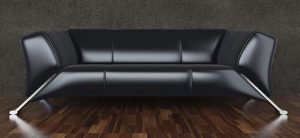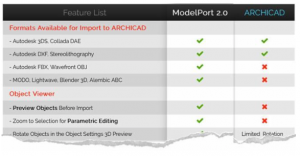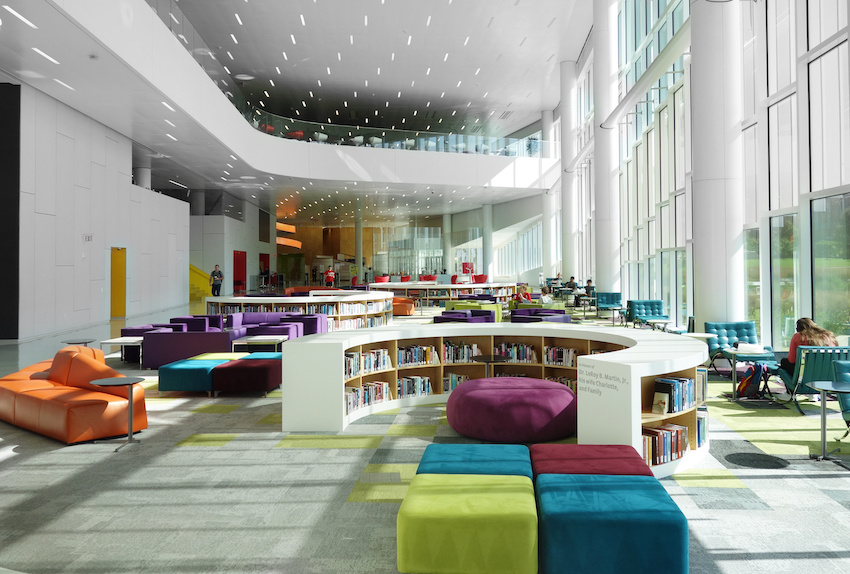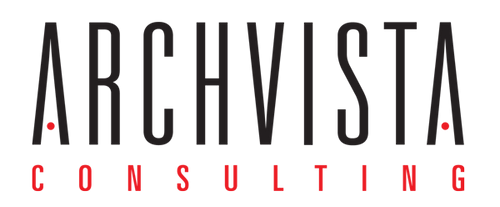Click the title or “+” button for an overview of an event. To view event details or register for an event click the “Read more” button of the expanded event overview.

High level review of Building Information Modeling (BIM) and the concepts. We will discuss strategies for organizing a BIM project, how to establish modeling requirements and methods to integrating BIM based on project size and type.
Part of a 6-Part Course on Implementing BIM into Architecture.
BIM adoption is more about process change than technology adoption. So for many, the question is not when to adopt but how – how to get started, how to leverage BIM to its full extent, how to implement BIM in different project environments, and how to set up the necessary processes and protocols to maximize the benefits. The answers to these questions and more are covered in the Implementing BIM into Architecture series.

Reviews the challenges and opportunities when you implement BIM early in the project as well as how to integrate BIM with popular design tools, such as SketchUp or Rhino, that are commonly used by architects in the design phase.
Part of a 6-Part Course on Implementing BIM into Architecture.
BIM adoption is more about process change than technology adoption. So for many, the question is not when to adopt but how – how to get started, how to leverage BIM to its full extent, how to implement BIM in different project environments, and how to set up the necessary processes and protocols to maximize the benefits. The answers to these questions and more are covered in the Implementing BIM into Architecture series.
Explores the visualization technologies available internal to BIM authoring tools as well as a review of cutting-edge third party products that not only enhance the quality of renderings but provide a faster, easier to use process for producing visualization.
Part of a 6-Part Course on Implementing BIM into Architecture.
BIM adoption is more about process change than technology adoption. So for many, the question is not when to adopt but how – how to get started, how to leverage BIM to its full extent, how to implement BIM in different project environments, and how to set up the necessary processes and protocols to maximize the benefits. The answers to these questions and more are covered in the Implementing BIM into Architecture series.

If setup correctly a BIM model can produce documents without a lot of rework and with the graphic output quality firms have come to expect from past CAD programs. We will discuss methods to adopt your existing standards within a BIM program as well as new opportunities for 3D documentation.
Part of a 6-Part Course on Implementing BIM into Architecture.
BIM adoption is more about process change than technology adoption. So for many, the question is not when to adopt but how – how to get started, how to leverage BIM to its full extent, how to implement BIM in different project environments, and how to set up the necessary processes and protocols to maximize the benefits. The answers to these questions and more are covered in the Implementing BIM into Architecture series.

We will review how BIM is used for collaboration locally within an office as well as externally through the internet. We will review BIM Server applications available within BIM tools as well as growing opportunities for Cloud-Based BIM services.
Part of a 6-Part Course on Implementing BIM into Architecture.
BIM adoption is more about process change than technology adoption. So for many, the question is not when to adopt but how – how to get started, how to leverage BIM to its full extent, how to implement BIM in different project environments, and how to set up the necessary processes and protocols to maximize the benefits. The answers to these questions and more are covered in the Implementing BIM into Architecture series.

In this session we will discuss energy analysis tools, how to setup a BIM model for LEED requirements and modeling methods that will allow a BIM model to work efficiently with these analysis tools as well as avoid common problems.
Part of a 6-Part Course on Implementing BIM into Architecture.
BIM adoption is more about process change than technology adoption. So for many, the question is not when to adopt but how – how to get started, how to leverage BIM to its full extent, how to implement BIM in different project environments, and how to set up the necessary processes and protocols to maximize the benefits. The answers to these questions and more are covered in the Implementing BIM into Architecture series.

Discover the new and improved ModelPort 2.0 – the leading object importer and editor for ARCHICAD. This latest release is more powerful than ever with new editing and viewing tools that work prior to and after importing objects into ARCHICAD. Change materials, textures, pen weights, fill colors and more. Plus reduce the file size and control the polygon count of objects improving both speed and performance. Oh, and did we mention, you can now access even more file types such as MODO, Lightwave and Blender just to name a few.
Join us to learn more and unleash a whole new world of ARCHICAD Objects with ModelPort 2.0.

Discover the new and improved ModelPort 2.0 – the leading object importer and editor for ARCHICAD. This latest release is more powerful than ever with new editing and viewing tools that work prior to and after importing objects into ARCHICAD. Change materials, textures, pen weights, fill colors and more. Plus reduce the file size and control the polygon count of objects improving both speed and performance. Oh, and did we mention, you can now access even more file types such as MODO, Lightwave and Blender just to name a few.
Join us to learn more and unleash a whole new world of ARCHICAD Objects with ModelPort 2.0.

With the release of ModelPort 2.0 downloading and managing ARCHICAD objects has never been easier. A plug-in to ARCHICAD, ModelPort opens the door to a wide variety of object types including OBJ, FBX and DAE as well as MODO, Blender and Lightwave. The latest editing tools provide the ability to change materials, textures, pen weights, and more. Plus you can view the object before and after importing it into ARCHICAD. Best of all, you can reduce the file size and control the polygon count of objects improving both speed and performance.
Join us to learn how ModelPort 2.0 can ease the creation and management of your ARCHICAD libraries.

With the release of ModelPort 2.0 downloading and managing ARCHICAD objects has never been easier. A plug-in to ARCHICAD, ModelPort opens the door to a wide variety of object types including OBJ, FBX and DAE as well as MODO, Blender and Lightwave. The latest editing tools provide the ability to change materials, textures, pen weights, and more. Plus you can view the object before and after importing it into ARCHICAD. Best of all, you can reduce the file size and control the polygon count of objects improving both speed and performance.
Join us to learn how ModelPort 2.0 can ease the creation and management of your ARCHICAD libraries.

Editing objects for ARCHICAD is often cumbersome and time consuming. With ModelPort 2.0‘s new Viewer & Editor tool this tedious task has become much easier. Discover how parametric editing allows you to control materials, textures, texture placement, pen weights, fill color and more. You’ll uncover how to:
- Edit selected items by object or by material.
- Control settings by selections within the item list.
- Set the object scale, rotation, material, transparency, graphics and other properties.
- Preview an object or model before importing into ARCHICAD.
- Review an object in perspective, floor plan, elevation or graphic view.
Join us for this webinar as we review how to select elements in the ModelPort Viewer, how to use the parametric editor and how to edit the ModelPort 2D symbol and 3D model. Creating ARCHICAD objects has never been easier.

Editing objects for ARCHICAD is often cumbersome and time consuming. With ModelPort 2.0‘s new Viewer & Editor tool this tedious task has become much easier. Discover how parametric editing allows you to control materials, textures, texture placement, pen weights, fill color and more. You’ll uncover how to:
- Edit selected items by object or by material.
- Control settings by selections within the item list.
- Set the object scale, rotation, material, transparency, graphics and other properties.
- Preview an object or model before importing into ARCHICAD.
- Review an object in perspective, floor plan, elevation or graphic view.
Join us for this webinar as we review how to select elements in the ModelPort Viewer, how to use the parametric editor and how to edit the ModelPort 2D symbol and 3D model. Creating ARCHICAD objects has never been easier.
- Want access to more objects for Archicad?

- Have problems editing imported objects?
- Do imported objects slow your model performance?
If the answer is yes, then it’s time to rethink how you work with imported objects!
Join us to discover how you can preview models before import, edit element settings and mange both file size and polygon count to improved the speed of your Archicad model.
Compare ModelPort to Archicad’s Standard Features
 ModelPort 2.0 adds a lot of productivity and management features that are not offered in Archicad. See how they compare.
ModelPort 2.0 adds a lot of productivity and management features that are not offered in Archicad. See how they compare.
About ModelPort
Downloading and managing ARCHICAD objects has never been easier. Import, edit and change settings for a wide variety of objects, including OBJ, FBX, MODO, Lightwave and Blender and more.
With ModelPort you can preview models before import as well as edit material, texture, texture placement, pen weight, fill color and more with powerful parametric editing tools.
You can also manage imported models and objects to reduce file size and control the polygon count thus improving speed and performance. Learn more about ModelPort.
- Want access to more objects for Archicad?

- Have problems editing imported objects?
- Do imported objects slow your model performance?
If the answer is yes, then it’s time to rethink how you work with imported objects!
Join us to discover how you can preview models before import, edit element settings and mange both file size and polygon count to improved the speed of your Archicad model.
Compare ModelPort to Archicad’s Standard Features
 ModelPort 2.0 adds a lot of productivity and management features that are not offered in Archicad. See how they compare.
ModelPort 2.0 adds a lot of productivity and management features that are not offered in Archicad. See how they compare.
About ModelPort
Downloading and managing ARCHICAD objects has never been easier. Import, edit and change settings for a wide variety of objects, including OBJ, FBX, MODO, Lightwave and Blender and more.
With ModelPort you can preview models before import as well as edit material, texture, texture placement, pen weight, fill color and more with powerful parametric editing tools.
You can also manage imported models and objects to reduce file size and control the polygon count thus improving speed and performance. Learn more about ModelPort.
Credits: 1 AIA LU/HSW; 1 AIBD P-CE; 0.1 IACET CEU
May qualify for learning hours through most Canadian architectural associations

RALEIGH,NC/USA – 8-24-2018: The James B Hunt library on Centennial Campus of NC State University in Raleigh NC
Now more than ever, the community importance of school buildings is being recognized. Educational buildings must serve many functions beyond classroom education, such as providing essential social support services to the communities they serve. Multiple programming goals demand flexible spaces, and in addition, school design must focus on sustainability and security. Many firms are turning to BIM technology not only to lower costs and make the construction process more efficient, but also to design safer and better-performing school buildings. In this webinar, you will hear from a panel well-versed in using BIM for innovative educational projects who will share their experience and lessons learned.
 Chris Ambridge AIA, is an Associate Principal at cg+s architects. Chris has been at the firm since 2004 and has worked mainly on k-12 education projects within the Washington DC area. Chris is particularly interested the design opportunities that arise from close collaboration across a team during the design and construction process.
Chris Ambridge AIA, is an Associate Principal at cg+s architects. Chris has been at the firm since 2004 and has worked mainly on k-12 education projects within the Washington DC area. Chris is particularly interested the design opportunities that arise from close collaboration across a team during the design and construction process.
Saravanan Bala, AIA, LEED-AP, NCARB, ALEP is the Principal of the Education Studio  and is an Accredited Learning Environment Planner. He is an accomplished architect who has designed and managed several successful high schools around the state. Saravanan is a nationally recognized expert in evolutionary trends in curriculum, pedagogy and learning, and brings a wealth of research and data pertaining to the role educational environments can play to catalyze learning outcomes. He frequently presents at national and regional conferences and specializes in helping school districts developing their own pathways to achieving their educational goals.
and is an Accredited Learning Environment Planner. He is an accomplished architect who has designed and managed several successful high schools around the state. Saravanan is a nationally recognized expert in evolutionary trends in curriculum, pedagogy and learning, and brings a wealth of research and data pertaining to the role educational environments can play to catalyze learning outcomes. He frequently presents at national and regional conferences and specializes in helping school districts developing their own pathways to achieving their educational goals.
 Matt Johnson, RA is an Associate at Orcutt | Winslow specializing in K-8 design. His early experience with both commercial and hospitality architecture offers an understanding of complicated project design within large project teams and the practicalities of how a project comes to fruition. He has taken this experience and uses his passion and expertise in Building Information Modeling (BIM) to continue to advance project design and constructability, to allow for complete project efficiency in an integrated delivery model. As the BIM advisor for Orcutt | Winslow Education, he counsels colleagues in how to set up projects for the greatest efficiency and is a resource for day-to-day BIM application. Matt is also a Faculty Associate at Arizona State University, teaching BIM to upper division architecture students. Beyond his technical capabilities, Matt has a passion for “…designing places and experiences that attempt to enhance, focus and give hope to the human experience on earth.” From his perspective educational design offers that opportunity within its own microcosm of the community.
Matt Johnson, RA is an Associate at Orcutt | Winslow specializing in K-8 design. His early experience with both commercial and hospitality architecture offers an understanding of complicated project design within large project teams and the practicalities of how a project comes to fruition. He has taken this experience and uses his passion and expertise in Building Information Modeling (BIM) to continue to advance project design and constructability, to allow for complete project efficiency in an integrated delivery model. As the BIM advisor for Orcutt | Winslow Education, he counsels colleagues in how to set up projects for the greatest efficiency and is a resource for day-to-day BIM application. Matt is also a Faculty Associate at Arizona State University, teaching BIM to upper division architecture students. Beyond his technical capabilities, Matt has a passion for “…designing places and experiences that attempt to enhance, focus and give hope to the human experience on earth.” From his perspective educational design offers that opportunity within its own microcosm of the community.
 A licensed architect since 2016, Eddie Van Slambrouck, LEED AP, ALEP Project Architect, QKA Architecture developed his interest in design from a wide array of experiences, from building backyard chicken coops to planning large infrastructure projects. Further, while earning his Master of Architecture degree, he received several jury prize awards that fueled his interest in digital media and 3D modeling – a skill that enables his clients to accurately visualize and approve the final project on screen before construction begins. In addition, as a LEED Accredited Professional since 2008, Van Slambrouck has a strong expertise in sustainable design and renewable energy systems.
A licensed architect since 2016, Eddie Van Slambrouck, LEED AP, ALEP Project Architect, QKA Architecture developed his interest in design from a wide array of experiences, from building backyard chicken coops to planning large infrastructure projects. Further, while earning his Master of Architecture degree, he received several jury prize awards that fueled his interest in digital media and 3D modeling – a skill that enables his clients to accurately visualize and approve the final project on screen before construction begins. In addition, as a LEED Accredited Professional since 2008, Van Slambrouck has a strong expertise in sustainable design and renewable energy systems.
Learning Objectives:
- Describe how BIM can be used to improve the design and safety of buildings.
- Define how BIM can improve design adherence to the requirements of national and local codes.
- Explain how the different BIM modes of collaboration across disciplines improve the design and safety of buildings.
- List the ways in which BIM can assist designers in easily testing projects for sustainability and energy efficiency.
